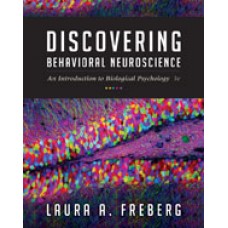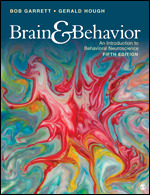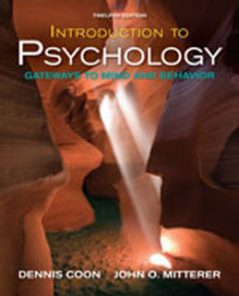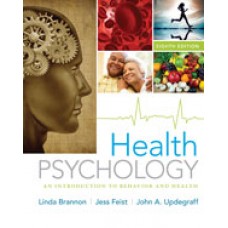Test Bank For Brain & Behavior: An Introduction to Biological Psychology 3rd Edition by Bob L. Garrett
$35.00 Original price was: $35.00.$26.50Current price is: $26.50.
Test Bank For Brain & Behavior: An Introduction to Biological Psychology 3rd Edition by Bob L. Garrett
This is completed downloadable of Test Bank For Brain & Behavior: An Introduction to Biological Psychology 3rd Edition by Bob L. Garrett
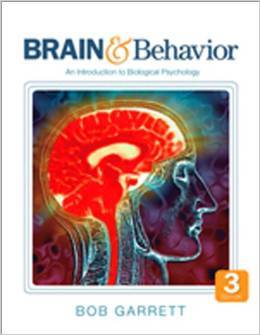
Product Details:
- ISBN-10 : 1412981689
- ISBN-13 : 978-1412981682
- Author: Bob L. Garrett
Brain & Behavior: An Introduction to Biological Psychology showcases our rapidly increasing understanding of the biological foundations of behavior, engaging students immediately with easily accessible content. Bob Garrett uses colorful illustrations and thought-provoking facts while maintaining a “big-picture” approach that students will appreciate. Don’t be surprised when they reach their “eureka” moment and exclaim, “Now I understand what was going on with Uncle Edgar!”
Praise for the Second Edition of Brain & Behavior
“Great book- excellent instructional design and graphics with practical applications.”—Robin Steed, MA, LOTR, Louisiana State University Health Science Center
“My students liked the organization of Garrett. They thought it was easy to read and an appropriate resource for this course.” —Charles Long, University of Memphis
“I have been searching for a book that would thoroughly treat all of the concepts in brain and behavior while also being easy enough for the student to read without becoming overwhelmed. I think that the Garrett text might be an answer to my problem.” —Natalie Ceballos, Texas State University
Table of Content:
- Machine generated contents note: ch. 1 What Is Biopsychology?
- The Origins of Biopsychology
- Prescientific Psychology and the Mind-Brain Problem
- Descartes and the Physical Model of Behavior
- Helmholtz and the Electrical Brain
- The Localization Issue
- Nature and Nurture
- The Genetic Code
- Application: A Computer Made of DNA
- Genes and Behavior
- The Human Genome Project
- Application: Beyond the Human Genome Project
- Heredity: Destiny or Predisposition?
- pt. I Neural Foundations of Behavior: The Basic Equipment
- ch. 2 Communication Within the Nervous System
- The Cells That Make Us Who We Are
- Neurons
- Application: Targeting Ion Channels
- Glial Cells
- How Neurons Communicate With Each Other
- Chemical Transmission at the Synapse
- Regulating Synaptic Activity
- Neurotransmitters
- Application: Agonists and Antagonists in the Real World
- Of Neuronal Codes, Neural Networks, and Computers
- In the News: The Human Brain Project
- ch. 3 The Organization and Functions of the Nervous System
- The Central Nervous System
- The Forebrain
- Application: The Case of Phineas Gage
- The Midbrain and Hindbrain
- The Spinal Cord
- Protecting the Central Nervous System
- The Peripheral Nervous System
- The Cranial Nerves
- The Autonomic Nervous System
- Development and Change in the Nervous System
- The Stages of Development
- How Experience Modifies the Nervous System
- Damage and Recovery in the Central Nervous System
- In the News: Is the Brain Too Fragile for Sports?
- In the News: Nuclear Testing Reveals Adult Neurogenesis in Humans
- Application: Mending the Brain With Computer Chips
- ch. 4 The Methods and Ethics of Research
- Science, Research, and Theory
- Theory and Tentativeness in Science
- Experimental Versus Correlational Studies
- Research Techniques
- Staining and Imaging Neurons
- Light and Electron Microscopy
- Measuring and Manipulating Brain Activity
- In the News: Looking Into the Brain
- Brain Imaging Techniques
- Application: Scanning King Tut
- In the News: Growing a Model Brain From Stem Cells
- Investigating Heredity
- Research Ethics
- Plagiarism and Fabrication
- Protecting the Welfare of Research Participants
- In the News: NIH Is Retiring Most of Its Research Chimps
- Gene Therapy
- Stem Cell Therapy
- pt. II Motivation and Emotion: What Makes Us Go
- ch. 5 Drugs, Addiction, and Reward
- Psychoactive Drugs
- Opiates
- Depressants
- Stimulants
- Psychedelics
- Marijuana
- In the News: Changing Attitudes Toward Marijuana
- Addiction
- The Neural Basis of Addiction and Reward
- Dopamine and Reward
- Dopamine, Learning, and Brain Plasticity
- Treating Drug Addiction
- Application: Preventing Addiction by Targeting the Immune System
- The Role of Genes in Addiction
- Separating Genetic and Environmental Influences
- What Is Inherited?
- Implications of Addiction Research
- ch. 6 Motivation and the Regulation of Internal States
- Motivation and Homeostasis
- Theoretical Approaches to Motivation
- Simple Homeostatic Drives
- Hunger: A Complex Drive
- The Role of Taste
- Application: Predator Control Through Learned Taste Aversion
- Digestion and the Two Phases of Metabolism
- Signals That Start a Meal
- Signals That End a Meal
- Long-Term Controls
- Application: How Nicotine and Marijuana Affect Appetite
- Obesity
- The Myths of Obesity
- The Contributions of Heredity and Environment
- In the News: How the FTO Gene Makes Us Obese
- Application: The Sweet Taste of Obesity
- Obesity and Reduced Metabolism
- Treating Obesity
- Anorexia, Bulimia, and Binge Eating Disorder
- Environmental and Genetic Contributions
- The Role of Serotonin, Dopamine, and Cannabinoids
- ch. 7 The Biology of Sex and Gender
- Sex as a Form of Motivation
- Arousal and Satiation
- The Role of Testosterone
- Brain Structures and Neurotransmitters
- Odors, Pheromones, and Sexual Attraction
- Application: Of Love and Bonding
- The Biological Determination of Sex
- Chromosomes and Hormones
- Prenatal Hormones and the Brain
- Gender-Related Behavioral and Cognitive Differences
- Some Demonstrated Male
- Female Differences
- Origins of Male
- Female Differences
- Biological Origins of Gender Identity
- Gender Identity Reversal
- 46 XY Difference in Sexual Development
- 46 XX Difference in Sexual Development
- Cognitive and Behavioral Effects
- Ablatio Penis: A Natural Experiment
- Application: Sex, Gender, and Sports
- In the News: Who Chooses a Child’s Sex?
- Sexual Orientation
- The Social Influence Hypothesis
- Genetic and Epigenetic Influences
- Prenatal Influences on Brain Structure and Function
- Social Implications of the Biological Model
- ch. 8 Emotion and Health
- Emotion and the Nervous System
- Autonomic and Muscular Involvement in Emotion
- The Emotional Brain
- The Prefrontal Cortex
- Application: Why I Don’t Jump Out of Airplanes
- The Amygdala
- Hemispheric Specialization in Emotion
- Stress, Immunity, and Health
- Stress as an Adaptive Response
- Negative Effects of Stress
- In the News: Keeping Odd Hours Could Make You Sick
- Application: One Aftermath of 9/11 Is Stress-Related Brain Damage
- Social, Personality, and Genetic Factors
- Pain as an Adaptive Emotion
- Biological Origins of Aggression
- Hormones and Aggression
- The Brain’s Role in Aggression
- Neurotransmitters and Aggression
- Application: Neurocriminology, Responsibility, and the Law
- Heredity and Environment
- pt. III Interacting With the World
- ch. 9 Hearing and Language
- Hearing
- The Stimulus for Hearing
- The Auditory Mechanism
- Frequency Analysis
- Application: Restoring Hearing
- Locating Sounds With Binaural Cues
- Application: I Hear a Tree Over There
- Language
- Broca’s Area
- Wernicke’s Area
- The Wernicke-Geschwind Model
- Reading, Writing, and Their Impairment
- Mechanisms of Recovery From Aphasia
- A Language-Generating Mechanism?
- In the News: Learning Language Starts Before Birth
- Language in Nonhumans
- Neural and Genetic Antecedents
- In the News: The Link Between Human Language and Birdsong
- ch. 10 Vision and Visual Perception
- Light and the Visual Apparatus
- The Visible Spectrum
- The Eye and Its Receptors
- Pathways to the Brain
- Application: Restoring Lost Vision
- Color Vision
- Trichromatic Theory
- Opponent Process Theory
- A Combined Theory
- Color Blindness
- Form Vision
- Contrast Enhancement and Edge Detection
- Hubel and Wiesel’s Theory
- Spatial Frequency Theory
- The Perception of Objects, Color, and Movement
- The Two Pathways of Visual Analysis
- Disorders of Visual Perception
- The Problem of Final Integration
- Application: When Binding Goes Too Far
- ch. 11 The Body Senses and Movement
- The Body Senses
- Proprioception
- The Skin Senses
- The Vestibular Sense
- The Somatosensory Cortex and the Posterior Parietal Cortex
- Pain and Its Disorders
- Application: Treating Pain in Limbs That Aren’t There
- Movement
- The Muscles
- The Spinal Cord
- The Brain and Movement
- In the News: Coordinating Artificial Limbs
- Disorders of Movement
- In the News: Curing Parkinson’s in a Dish
- pt. IV Complex Behavior
- ch. 12 Learning and Memory
- Learning as the Storage of Memories
- Amnesia: The Failure of Storage and Retrieval
- Application: The Legacy of HM
- Mechanisms of Consolidation and Retrieval
- Where Memories Are Stored
- Two Kinds of Learning
- Working Memory
- Brain Changes in Learning
- Long-Term Potentiation
- How LTP Happens
- Neural Growth in Learning
- Consolidation Revisited
- Changing Our Memories
- Application: Total Recall
- In the News: Recalling It Now Helps You Remember It Later
- Learning Deficiencies and Disorders
- Effects of Aging on Memory
- Alzheimer’s Disease
- In the News: NIH Teams With Drug Companies
- Korsakoff’s Syndrome
- ch.
- 13 Intelligence and Cognitive Functioning
- The Nature of Intelligence
- What Does “Intelligence” Mean?
- The Structure of Intelligence
- The Biological Origins of Intelligence
- The Brain and Intelligence
- Specific Abilities and the Brain
- Application: We Aren’t the Only Tool Users
- Heredity and Environment
- Application: Enhancing Intelligence and Performance
- Deficiencies and Disorders of Intelligence
- Effects of Aging on Intelligence
- Intellectual Disability
- Autism Spectrum Disorder
- Application: Childhood Vaccines and Autism
- Attention-Deficit/Hyperactivity Disorder
- In the News: Testing for ADHD
- ch. 14 Psychological Disorders
- Schizophrenia
- Characteristics of the Disorder
- Heredity
- Two Kinds of Schizophrenia
- The Dopamine Hypothesis
- Beyond the Dopamine Hypothesis
- Brain Anomalies in Schizophrenia
- Affective Disorders
- Heredity
- The Monoamine Hypothesis of Depression
- Electroconvulsive Therapy
- Antidepressants, ECT, and Neural Plasticity
- Application: Electrical Stimulation for Depression
- Rhythms and Affective Disorders
- Bipolar Disorder
- Brain Anomalies in Affective Disorders
- Suicide
- Anxiety Disorders
- Generalized Anxiety, Panic Disorder, and Phobia
- Posttraumatic Stress Disorder
- In the News: Virtual Reality Isn’t Just for Video Games
- Anomalies in Brain Functioning
- Obsessive-Compulsive Disorder
- Brain Anomalies in Obsessive-Compulsive Disorder
People Also Search:
brain & behavior: an introduction to biological psychology 3rd
brain & behavior: an introduction to biological psychology 3rd edition
brain & behavior: an introduction to biological psychology 3rd edition pdf
brain & behavior: an introduction to biological psychology 3rd download scribd
brain & behavior: an introduction to biological psychology 3rd test bank download pdf
You may also like…
Solution Manual
Test Bank
Test Bank for Introduction to Psychology Gateways to Mind and Behavior, 12th Edition: Coon
Test Bank
Test Bank for Health Psychology An Introduction to Behavior and Health, 7th Edition: Brannon




